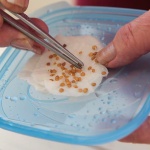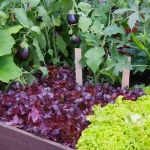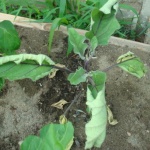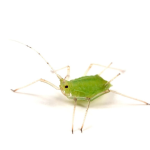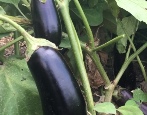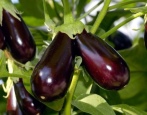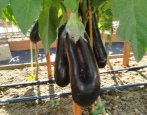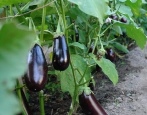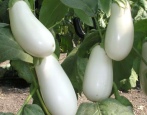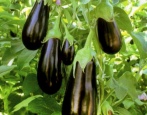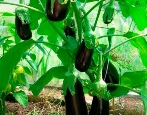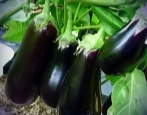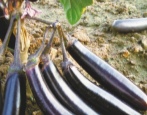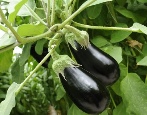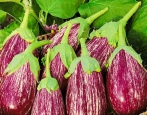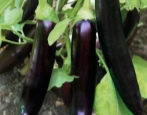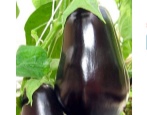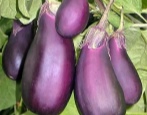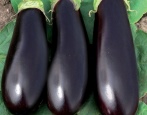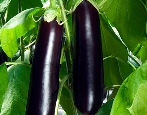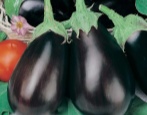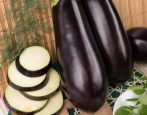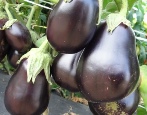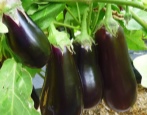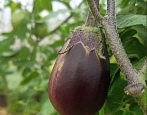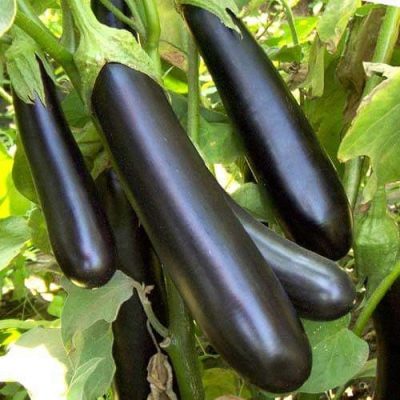
- Authors: Gavrish S.F., Kapustina R.N., Verba V.M.
- Year of approval: 2015
- Growth type: medium-sized
- Bush height, cm: 70-100
- Fruit size: large
- Fruit shape: cylindrical
- Fruit weight, g: 500-550
- Yield: fruitful
- Fruit color: dark purple
- Ripening terms: mid-season
Eggplant Ilya Muromets is a relatively young culture, but it has already gained popularity and respect of gardeners. Farmers appreciate it for its presentable appearance. In addition, it is often chosen for its unpretentiousness.
Breeding history
The variety in question originated in our country thanks to the breeding company "Gavrish". Such specialists as Kapustina R.N., Gavrish S.F., Verba V.M. worked on its creation.In 2015, the vegetable became available for mass cultivation and was added to the list of the State Register.
Description of the variety
Ilya Muromets does not belong to hybrids, it is an independent variety. Suitable for cultivation both in the open field and in greenhouses.
Characteristics of the appearance of plants and fruits
The type of growth of this type of eggplant is characterized as medium. The bush rises 70-100 centimeters above the ground and is semi-spreading. The stem is covered with fluff and has an anthocyanin coloration. Green leaves of moderate size are slightly wrinkled and have a wavy edge. A small number of spines can be seen on the calyx. The described variety blooms with snow-white flowers with purple edges.
The shape of the eggplants repeats the cylinder and ripens large. One copy weighs 500-550 grams. In length, the fruit stretches up to 35-40 centimeters, and reaches up to 10 centimeters in diameter. Ilya Muromets' colors are deep purple. The peel is smooth, glossy. By consistency, the pulp is dense, there are few seeds, they are unevenly distributed.
Purpose and taste
The considered type of eggplant is universal. It can not only be eaten in salads, casseroles, stews and other dishes, but also canned. Farmers often pursue commercial goals, using vegetables to produce caviar or specialties for cafes and restaurants. The fruits are characterized by a balanced taste, there is no bitterness in them.
Ripening terms
According to the characteristics, Ilya Muromets is included in the category of mid-season species. The fruiting phase starts 110-115 days after planting and lasts until frost.
Yield
The described variety is famous for its high productivity. On average, gardeners remove 6 kilograms of vegetables from one square meter from the beds covered with film.
Growing regions
The cultivation geography of this variety is very extensive. It can be observed in the Far East, North, East Siberian, Ural, North-West, West Siberian, Central Black Earth, Volgo-Vyatka, Middle Volga, Central, Lower Volga regions of our country.
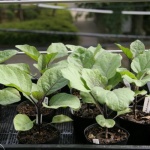
To get a tasty and bountiful eggplant crop, you must first grow strong and healthy seedlings. This culture is considered very capricious, therefore, you need to take care of seedlings when growing at home as correctly and carefully as possible.
Growing and care
If you plan to cultivate a vegetable in a greenhouse, then you should start sowing seeds in February.When it comes to open ground, the planting material is prepared for the procedure in the third decade of March. The day before, the seeds are disinfected with potassium permanganate and kept for 15 minutes in hot water.
For peat pots with seedlings, it is necessary to take a dark room where the air is heated to 25 degrees. When the seedlings are formed, it is recommended to lower the temperature to 16 degrees for a week, then raise it again to 28. Young plants are moved to a permanent place around the end of May. After planting, it is advised to tie each bush to a support.
Until the formation of inflorescences, watering is carried out once every seven days. Further - once every four days. On the eve of flowering, during the period of fruit formation and at the stage of harvesting mature vegetables, it is necessary to introduce top dressing into the ground. Its role can be played by ammonium nitrate, potassium salt of hydrochloric acid, superphosphate.
In addition, eggplant requires bush formation. To do this, experts recommend cutting off all leaves and side shoots before the first fork; by the end of July, only 5-6 of the most voluminous ovaries should remain on the plant.
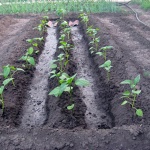
Planting eggplant is one of the most important stages in growing. When choosing a place for eggplants on your site, it is important to remember that this culture should be in warm soil, constantly illuminated by the sun. The plant is also very fond of spacious, open spaces, since its roots can grow over sufficient areas.


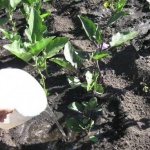
Soil requirements
Ilya Muromets feels comfortable in fertile neutral soil, which has an acid-base balance.
Required climatic conditions
It is advisable to give preference to an area brightly lit by the sun, there should be no shade or depressions with excess moisture.
Disease and pest resistance
The culture shows excellent resistance to powdery mildew, viruses and fungi, late blight. However, with mistakes in care, it can be attacked by the Colorado potato beetle, root rot. Spraying with fungicides will help strengthen the immune system.
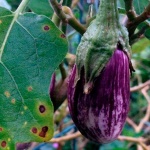
Eggplant is one of the most demanding crops. For its successful cultivation, it is necessary to create optimal conditions, as well as to carry out prevention and fight against diseases and pests. Eggplant often infects both fungal and viral diseases. If treatment is not started on time, you can completely lose the crop.
Review overview
Not only experienced summer residents, but also novice gardeners appreciate the above-described variety. They note that the seeds sprout quickly, the plant heroically endures bad weather, does not cause trouble in care and, as a result, pleases the owner with an abundant harvest of delicious vegetables.
